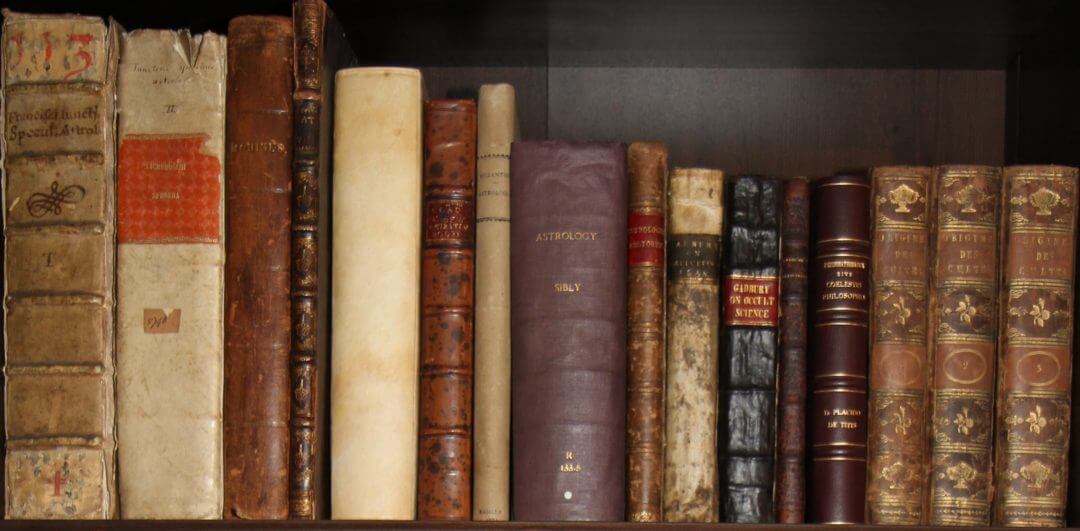Book review: Leandro Cantamessa ‘Astrologia: opere a stampa’
– February 22, 2008
There have been few bibliographic reference books ever published about works on astrology. Until last year, the foremost source remained F. Leigh Gardner’s ‘Bibliotheca Astrologica’ (1911), a concise list of a thousand or so books and periodicals published in English, French, Latin and in a few cases German between the 15th century and the time of publication, supported here and there by pithy critical remarks; while the relevant sections of Lynn Thorndike’s ‘A History of Magic and Experimental Science’ provided more detailed commentaries on the contents of selected major works on astrology published up to and including the seventeenth century.
For books published since 1910, the only sources I can think of have been Para Research’s ‘Astrology Books In Print’ from the early 1980s, whose scope was limited in accordance with the suggestion of its title to publications currently available new at the time of its compilation, and James Holden’s ‘Astrological Pioneers of America’ and ‘A History of Horoscopic Astrology’. This remains the case today.
Last year (2007), however, an Italian collector by the name of Leandro Cantamessa completed and had published a vastly more ambitious project than Gardner’s classic reference, yet one covering marginally less temporal ground than the latter, in that it deals exclusively with works on astrology published up to and including the year 1900, whereas Gardner’s book extends up to about 1910.
Published by Leo S. Olschki, Cantamessa’s work constitutes Issue 187 in a series of bibliographic reference works called the Biblioteca di Bibliografia Italiana. It appears in two fine octavo hardcover volumes running to 1099 pages and 5045 entries. No dust jackets have been issued, but the volumes themselves are finely presented, with red and black printed headlines on the beige-finished spines and front covers, together with images lifted directly from centuries-old astrological works.
My first thought on opening the books was ‘how has Cantamessa managed to eke out over 5,000 entries where Gardner managed barely 1,000?’ Much of the answer appears to lie in the fact that he has quite comprehensively investigated library holdings throughout Europe, and as a result has catalogued books published on astrology in all European languages, regardless of how major or minor each work might be perceived by the typical English-speaking reader. Unlike Gardner’s work, this is not an anglo-centric book; and nor is it even written in English, but rather in Italian, though I would strongly suspect in view of its usefulness as a reference that an English translation might eventually be commissioned, if one is not in the pipeline already.
The possible opacity to many potential readers of the Italian descriptions notwithstanding, this is still quite evidently a very useful reference work that far surpasses Gardner in comprehensiveness.
In addition to authors, full-length titles, dates and publishers, Cantamessa indicates (where he has been able to discern it, at least) the physical format of the book (e.g. quarto, octavo), the number of pages, and essential details of the typical collation.
The Italian description that follows many entries is usually relatively brief and to the point, but seeks to provide essential information of relevance to the bibliographic context of the work in question, often with cross-references being thrown to other numbered entries in Cantamessa’s two-volume bibliography.
Finally, in perhaps the most useful feature of the entire work, he lists libraries known from records to hold copies of the volume concerned. These go beyond the results found in the US-based (though nominally global) OCLC and the UK-based COPAC to include many libraries in Italy and elsewhere in Europe whose holdings do not show up in search results for either of the above databases. They thus make for a much fuller picture of the absolute scarcity or otherwise in library holdings of important astrological texts.
Given the vast length and international literary scope of this reference work, and the fact that it has been worked on by an Italian researcher, it is perhaps hardly surprising that an occasional mistake or omission should transpire in the first edition published.
I noticed a few errors when checking the author and compiler’s entries on English-language astrological works of the nineteenth century.
Under Pearce, Alfred John, Cantamessa has inconsistently included his short-lived journal from 1880 entitled ‘Urania’ but excluded his longer-running journal from c. 1892-4 entitled ‘The Future’.
Under Zadkiel, Cantamessa has included Morrison’s 1834 journal ‘The Horoscope’ but inconsistently excluded his journal of the same name from the 1840s. He has also erroneously attributed Pearce’s journal ‘Star Lore and Future Events’ that ran from 1897 to 1903 to Morrison (who was by then long since dead) instead of to Pearce. Thirdly, in the almanacs attributed to Zadkiel, he has mis-spelt the name of their true author as ‘Pierce’ instead of ‘Pearce’. And fourthly, he appears to have given false precedence in his listing to an 1865 reprint of Morrison’s two-volume ‘The hand-book of astrology’ (whose volumes were first published in 1861 and 1863 respectively), presenting the original edition only as an annex in his commentary on the 1865 reprint.
Under Simmonite, Cantamessa appears to be unaware that the 1896 edition entitled ‘Horary astrology: the key to scientific prediction, being the prognostic astronomer’, which he labels as a first edition, is in fact a much later reprint of the work to which he gives an entirely separate entry as ‘The Prognostic Astronomer, or horary astrology’ (1851).
One could be forgiven for suspecting that 19th century works in English are at the periphery of Cantamessa’s expertise, but that when it comes to works on astrology in Latin and Italian in particular, his reference work is likely to be by far the most reliable source available in any of our lifetimes.
‘Astrologia: opera a stampa 1472-1900’ by Leandro Cantamessa is available from the Libreria Chiari for the price of 105 Euros plus delivery: http://www.antiqbook.com/books/bookinfo.phtml?nr=321044616
It is also available from other various outlets at slightly greater expense.
Philip

Leave a Reply